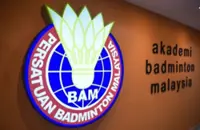Is this the world's most famous bus stop? The BTS Army thinks so. – Photos: GISELE SOO/The Star
One of the best places to celebrate nature is in Gangwon-do, a former province in South Korea that is now recognised as a state.
Located on the northeastern part of the country and surrounded by mountains, Gangwon is actually in the Korean Demilitarised Zone or the DMZ, where the border of the South and North Korea lies.
Already a subscriber? Log in
Save 30% OFF The Star Digital Access
Cancel anytime. Ad-free. Unlimited access with perks.





